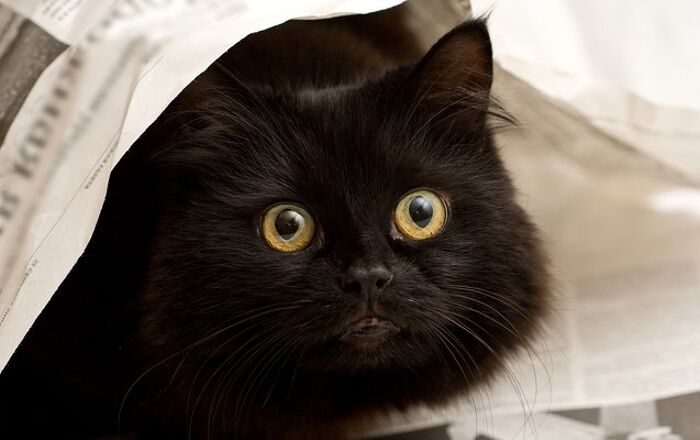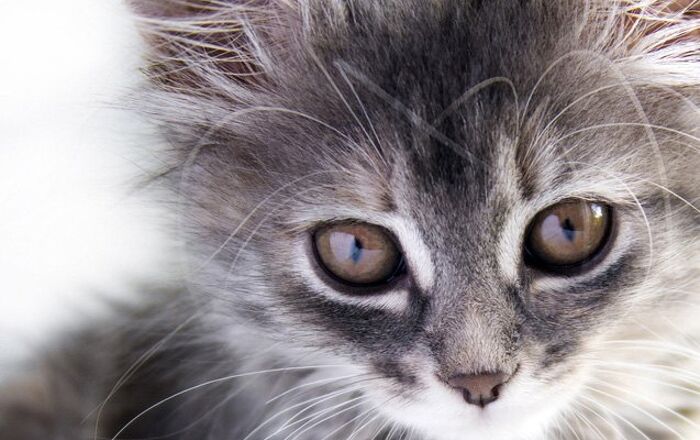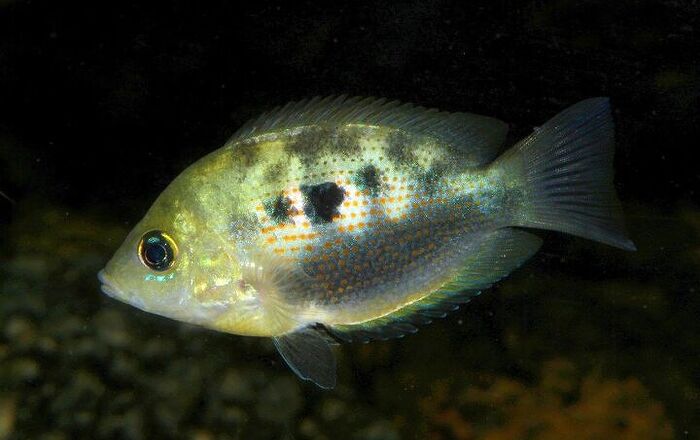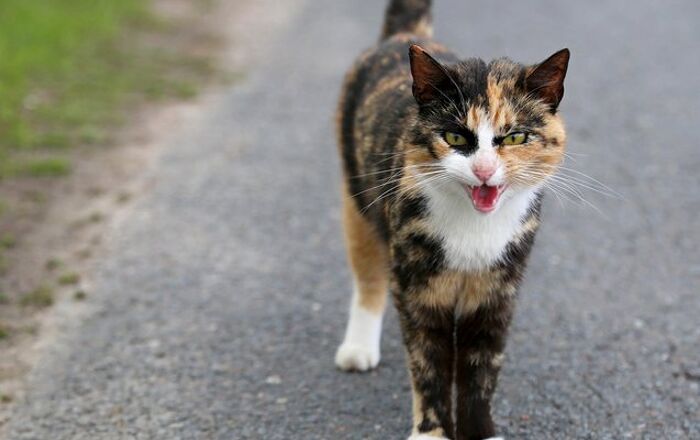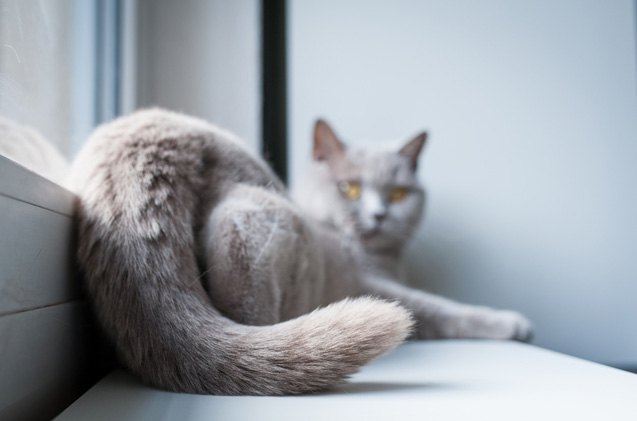
A cat’s tail works as an important appendage. That’s why you need to know about cat tail injuries and how to tell if your kitty is hurt.
Your cat’s tail is an extension of her spine, and it’s made up of muscles, bones, blood vessels, and nerves. In addition to using her tail to communicate feelings like annoyance, fear, and contentment, your kitty’s tail also helps her balance, so it’s important to take note of any signs that might indicate your cat’s tail has been injured.
Here’s a list of some cat tail injuries and what you can do to help your kitty feel better. Remember that it’s always best to consult with your veterinarian if you realize that your pet’s tail is injured, broken, or infected.
Just like the other bones in your kitty’s body, those that are in the tail can fracture or break, as well as become dislocated. These injuries could happen if your cat falls and doesn’t land correctly, if her tail is slammed by a door, or if your outdoor cat gets hit by a car (another great reason to consider keeping your kitty indoors), as a few examples.
The area where a fracture occurs in the tail can have an impact on how serious this type of injury will be. For example, an injury that’s closer to the base of the cat’s tail might also involve some level of nerve damage, so that would be considered more severe. On the other hand, if a fracture occurs towards the tip of the cat’s tail, it might be able to heal without any medical intervention.
If you think that your cat’s tail is fractured, broken, crushed, or dislocated, it’s best to take your pet to the vet ASAP. Sometimes, symptoms, such as a drooping tail, will be quite obvious, but there’s also the potential that you might not know anything is wrong until an x-ray is taken to assess the damage. A thorough exam will be necessary, and your vet will be able to determine what treatment is best.
An abrasion could develop when your cat’s tail scrapes against a rough surface or when the tail is caught under something. If the abrasion is minor, such as a small cut or scratch, your vet may recommend that you monitor it at home. He or she might also tell you to gently clean the tail using hydrogen peroxide or mild soap and warm water. Other treatments might include applying a prescribed antibiotic ointment and a bandage, but your vet will know what’s best. On the other hand, if there’s a lot of swelling or bleeding, or if you notice that the skin changes color, it’s time for your cat to visit the vet. Your pet will also need to see the vet if there are symptoms of muscle damage, skin damage, or infection.
A laceration can be so deep that it exposes the muscle and/or bone underneath the skin. With this injury, the risk of infection can be higher, and your vet may even tell you that your cat needs stitches to heal properly. Also, on your way to the vet’s office, you might need to control bleeding by wrapping your kitty’s tail in a towel, but again, call your veterinarian for personalized advice.
A bite wound from another animal is a common cat tail injury. Even if a wound is small, it’s important to keep an eye on it to see if it starts showing signs of infection, such as pain, inflammation, heat, and redness. If there aren’t any signs of infection and the wound is small, your vet might tell you to let it heal on its own. But if the wound is more serious, a trip to the vet can ensure that it’s properly cleaned and treated.
If your cat’s tail is pulled harshly or the tail breaks close to the base, the nerves within it might end up stretching, tearing, or severing. Symptoms could include a tail that’s limp and hangs, or you might notice that your cat can’t move her tail. Also, if nerves that control urinary and bowel movements are injured, your kitty might become incontinent. As you probably guessed, nerve damage is a serious problem that needs prompt veterinary attention.
In addition to being a complication of other injuries, a skin infection on your cat’s tail might develop as a result of an allergic reaction or flea allergy dermatitis. Symptoms could include skin that’s itchy, red, and inflamed. It’s best to contact your veterinarian to get the appropriate treatments, such as antibiotics and steroids, to treat the problem.
Sometimes, a cat’s tail injury might be self-inflicted. Stress, irritation, and allergies, as well as conditions like feline hyperesthesia, might contribute to self-mutilation, and your vet can help you pinpoint the cause. So, if you notice that your cat has been biting or scratching her tail a lot, talk to your vet to determine what treatment can bring your pet some much-needed relief.

